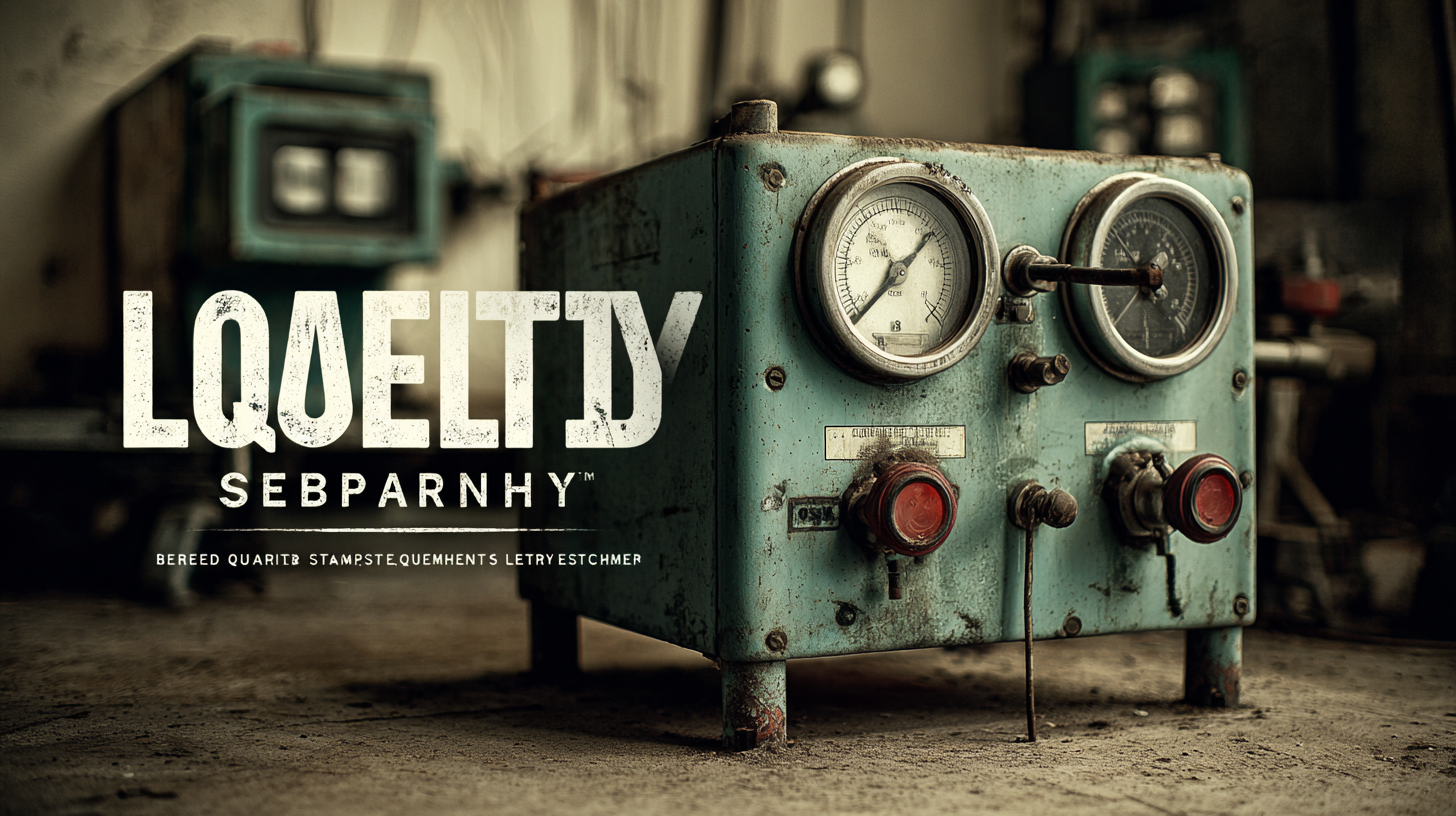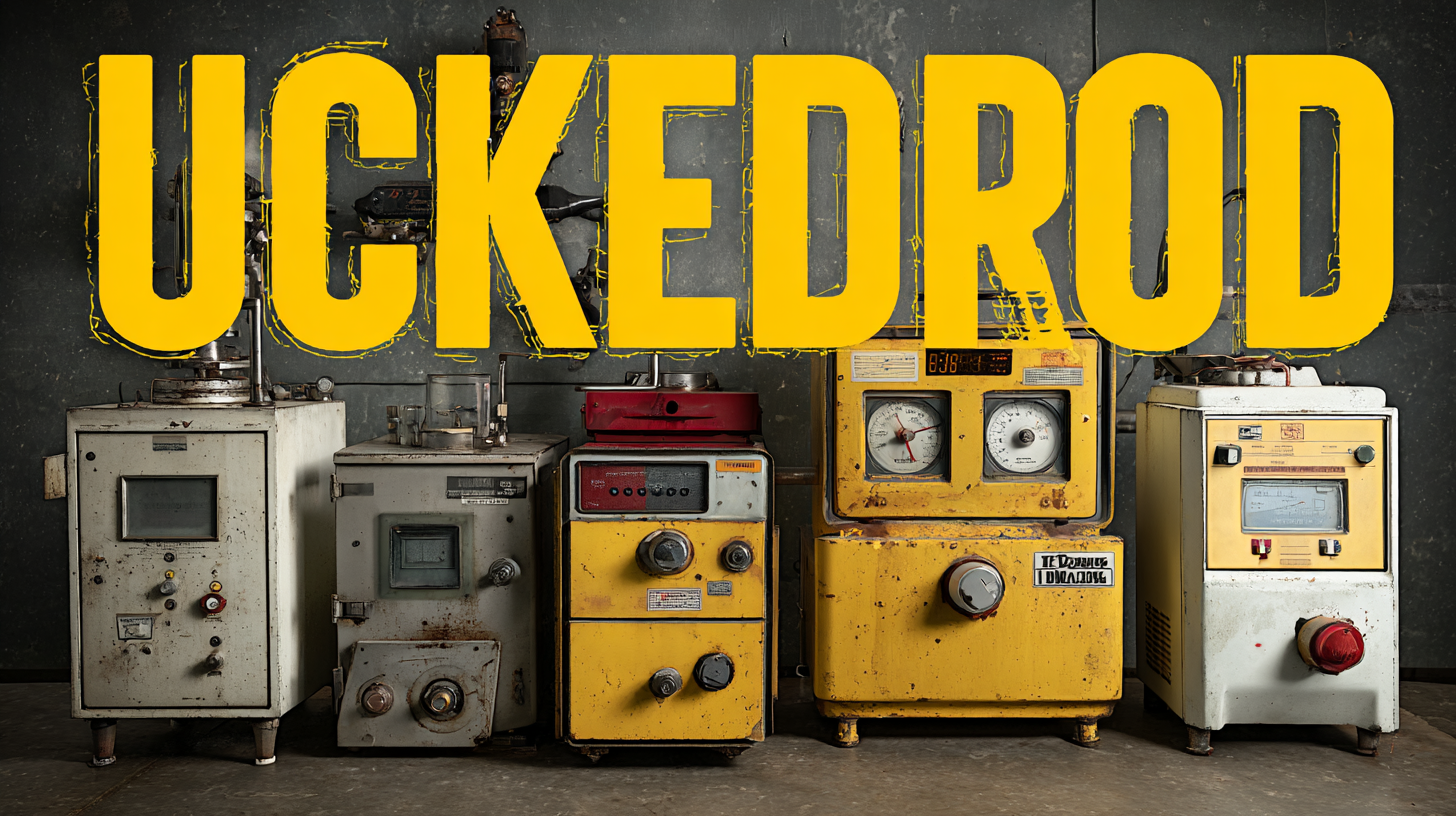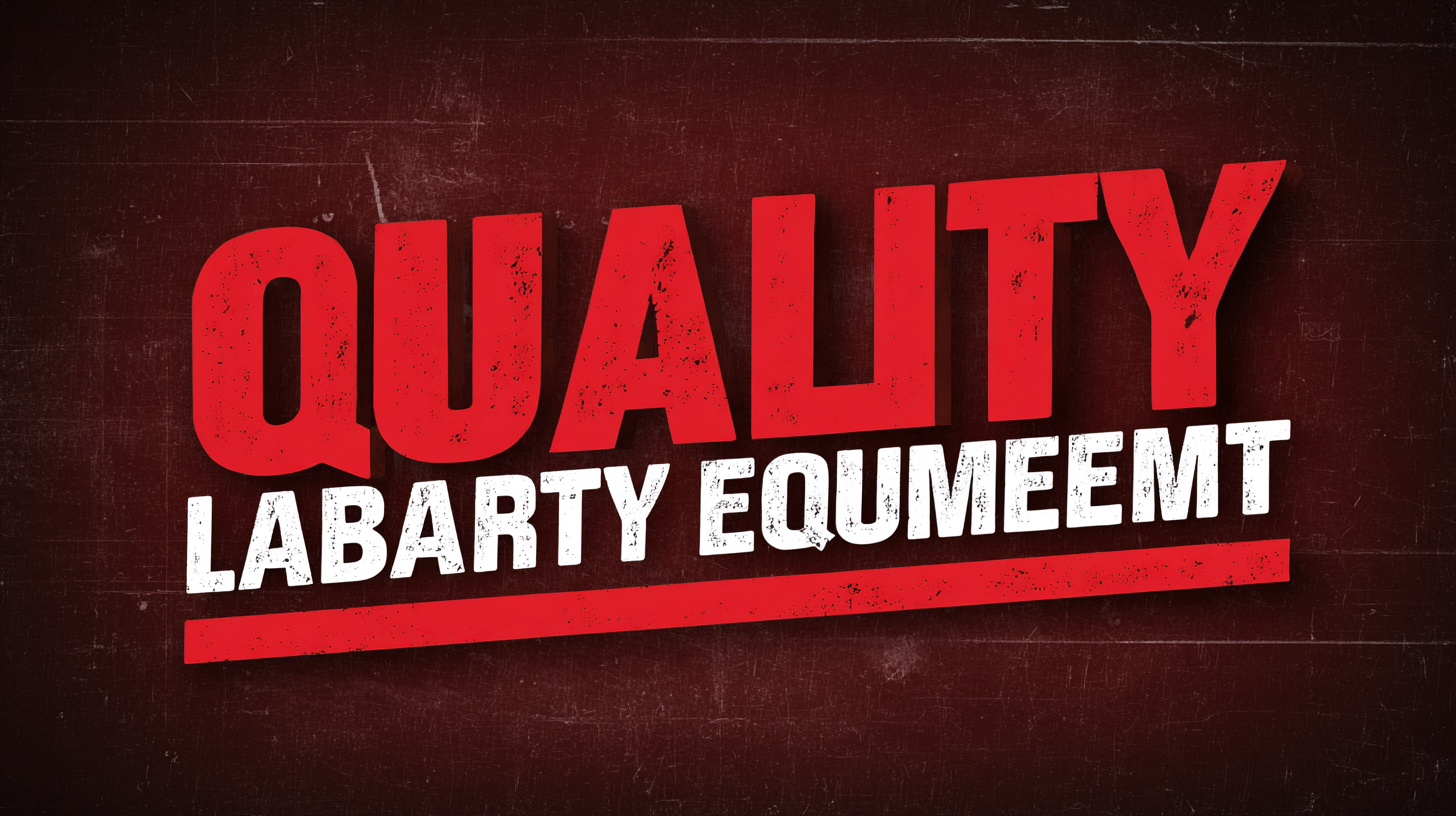

Unlocking Quality: Proven Techniques for Sourcing the Best Used Laboratory Equipment
In the rapidly evolving landscape of laboratory operations, the demand for high-quality used laboratory equipment is on the rise, driven by cost-effectiveness and sustainability considerations. According to a recent industry report, the global used laboratory equipment market is expected to reach USD 5 billion by 2025, reflecting a compound annual growth rate (CAGR) of 7%. As laboratories strive to maximize operational efficiency while minimizing expenses, sourcing reliable second-hand equipment has become increasingly crucial. Proven techniques for acquiring used laboratory equipment not only help institutions save capital but also ensure access to cutting-edge technology that may otherwise be financially out of reach. This blog explores effective strategies for unlocking the quality and potential of used laboratory equipment, positioning organizations to thrive in a competitive marketplace.

Identifying Reliable Sources for Used Laboratory Equipment
When sourcing used laboratory equipment, identifying reliable sources is crucial to ensure quality and reliability. Start by researching reputable suppliers known for their expertise in laboratory equipment. Look for companies with positive reviews and testimonials from previous customers. Online platforms dedicated to selling used equipment often provide ratings and feedback, which can give you insight into the seller’s credibility.
Another effective approach is to tap into professional networks and communities. Engaging with colleagues in the scientific field can lead you to trusted sources they have previously used. Attend industry conferences and workshops where you can meet suppliers face-to-face, allowing for a personal connection that can facilitate better trust and transparency. Additionally, consider contacting universities or research institutions that may have surplus equipment; they often sell their used instruments at competitive prices while ensuring a standard of quality. By leveraging these strategies, you can navigate the market more effectively and find reliable sources for used laboratory equipment.
Evaluating Condition and Performance: Key Factors to Consider
 When sourcing used laboratory equipment, evaluating its condition and performance is essential to ensure reliability and longevity. First, a thorough inspection of the physical condition can reveal much about the equipment's history and potential. Look for signs of wear, rust, or damage, as these factors may affect the functionality of the equipment. Checking for missing parts or modifications is also crucial, as this can indicate improper use or neglect. A well-maintained piece of equipment might have minor cosmetic flaws but should operate smoothly and reliably.
When sourcing used laboratory equipment, evaluating its condition and performance is essential to ensure reliability and longevity. First, a thorough inspection of the physical condition can reveal much about the equipment's history and potential. Look for signs of wear, rust, or damage, as these factors may affect the functionality of the equipment. Checking for missing parts or modifications is also crucial, as this can indicate improper use or neglect. A well-maintained piece of equipment might have minor cosmetic flaws but should operate smoothly and reliably.
Performance testing is the next critical step in the evaluation process. Before finalizing a purchase, it’s advisable to conduct tests that mimic real operational scenarios. This can include calibration checks, operational trials, and compatibility assessments. Ensuring that the equipment meets the required specifications for your laboratory's needs will save both time and money in the long run. Engaging with previous users or seeking documentation on the equipment's performance history can also provide valuable insights into its reliability. By prioritizing these factors during the sourcing process, laboratories can unlock quality and enhance their operational efficiency with the right used equipment.
Understanding Pricing Trends for Second-Hand Lab Instruments
The market for second-hand laboratory equipment has significantly evolved, driven by increasing demand and notable pricing trends. According to the latest market research, the global refurbished laboratory equipment market is projected to reach a valuation of USD 38.6 billion by 2034, growing at a compound annual growth rate (CAGR) of 6.1%. This robust growth trajectory indicates a rising trend among laboratories, driven by budget constraints and a push for sustainable practices, to procure high-quality used instruments rather than investing in new ones.
Understanding pricing trends in this domain is crucial for effective sourcing. The laboratory equipment market size was estimated at USD 28.03 billion in 2022, with an expected growth rate of 7.62% CAGR through 2030. This dynamic environment suggests that prices for used laboratory equipment may fluctuate based on supply-demand metrics and innovations in technology, including generative AI applications that enhance operational efficiencies in laboratories. As institutions look for cost-effective solutions without compromising on quality, navigating these trends will be essential for successful procurement strategies in the coming years.
Pricing Trends for Second-Hand Laboratory Instruments
Best Practices for Verifying Equipment Calibration and Certifications
When sourcing used laboratory equipment, verifying equipment calibration and certifications is paramount to ensure operational reliability and safety. Calibration is critical in confirming that laboratory instruments accurately measure and respond as intended. A comprehensive report by the National Institute of Standards and Technology emphasizes that non-calibrated tools can lead to measurement errors, potentially compromising experimental results and leading to financial losses. According to industry standards, routine calibration checks can enhance the performance and lifespan of equipment, which is particularly vital in fields demanding precision, such as pharmaceuticals and environmental testing.

Best practices for verifying calibration include consulting the manufacturer’s documentation and confirming that used equipment has undergone proper calibration procedures as stipulated by recognized standards such as ISO/IEC 17025. Preparing for accreditation assessments also involves ensuring that all calibration records are meticulously maintained and accessible. As validation processes continue to evolve, relying on third-party validation services can provide additional assurance about the compliance and performance of laboratory instruments. Emphasizing proper calibration not only helps in maintaining quality but also builds trust in your laboratory’s outputs, making it an essential practice for any research or testing facility.
Navigating Warranty and Return Policies for Used Lab Gear
When considering the purchase of used laboratory equipment, understanding warranty and return policies is essential for ensuring your investment is protected. Unlike new equipment, which typically comes with straightforward warranties, the terms for used gear can vary significantly from one supplier to another. It is vital to seek out sellers who provide clear documentation regarding their warranties. A reputable supplier should offer a limited warranty that covers essential components and outlines any exclusions, giving you peace of mind about the performance and reliability of your equipment.
In addition to warranties, return policies play a crucial role in your decision-making process. Since used equipment may exhibit wear or deficiencies not immediately apparent, a flexible return policy can save you from potential headaches. Look for suppliers that offer a trial period during which you can test the equipment in your lab environment. This approach allows you to ensure that the equipment meets your specific needs and operational standards. Clarifying these terms before finalizing your purchase helps mitigate risks and fosters a smoother transaction experience, ultimately contributing to the overall quality and reliability of your lab operations.
Unlocking Quality: Proven Techniques for Sourcing the Best Used Laboratory Equipment - Navigating Warranty and Return Policies for Used Lab Gear
| Equipment Type | Condition | Warranty Period | Return Policy | Price ($) |
|---|---|---|---|---|
| Microscope | Good | 1 Year | 30 Days | 500 |
| Centrifuge | Very Good | 2 Years | 60 Days | 750 |
| Incubator | Excellent | 1 Year | No Returns | 1200 |
| Spectrophotometer | Fair | 6 Months | 14 Days | 300 |
| Autoclave | Good | 1 Year | 30 Days | 800 |





